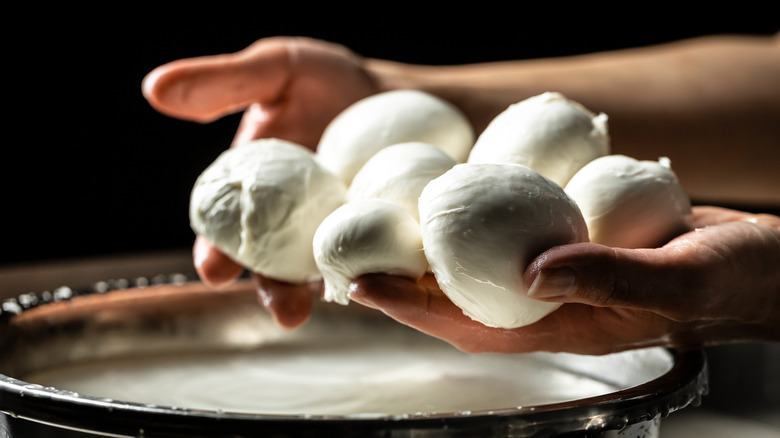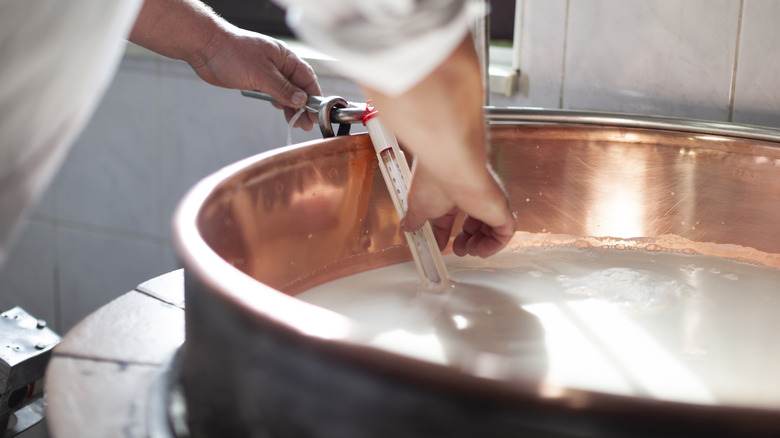The Most Important Tool You Need For Making Fresh Mozzarella
Cheese-making seems like the kind of work best left to professionals. However, you can make certain cheeses in the comfort of your own home. And while highly refined cheese like Brie or Camembert might not be what's coming out of your kitchen, good milk and the right equipment are all you need to make fresh mozzarella. But despite being one of the easiest cheeses to make, mozzarella still requires the right tools in order to guarantee the best results. The most important of those tools is an instant-read thermometer.
You can get away with testing something like a steak without using an instant-read thermometer (though you really shouldn't), but not when it comes to making cheese. An instant-read thermometer consists of a metal temperature probe that penetrates the meat or liquid and a display showing you the read temperature. Depending on the brand, you can get an accurate temperature reading in as little as three seconds, which really helps you know exactly what is going on inside your food.
For mozzarella, having the instant-read thermometer helps in monitoring the temperature of the milk as it heats up. This is necessary for cheese-making because by keeping an eye on the temperature, you are better able to regulate your stove top to keep the milk from getting too hot too quickly. But what exactly are the temperatures you need to keep track of for mozzarella making?
Keeping track of temperatures
There are a few critical points in the mozzarella-making process that require frequent temperature checks of the milk. The primary stage involves the addition of citric acid, which is what begins the process of separating the milk in opt curds and whey. The milk is warmed over medium-low heat. Once the temperature nears 70 degrees Fahrenheit, you should begin to see small bits of curd forming in the milk. This is the beginning of the separation.
Keep an eye on the warming milk as you prepare your rennet. Rennet are enzymes cheese makers use to coagulate the milk and make the curds solid. For mozzarella, rennet is added once the milk reaches 88 or 90 degrees Fahrenheit. At this stage, you have two options: Either continue warming the milk, stirring occasionally to separate the curds and whey, or cut the heat and let the pot sit for 10 to 15 minutes as the curds solidify, cut them, and continue warming.
Either way, once you've cut the curds, the liquid whey needs to be warmed to a minimum of 105 degrees Fahrenheit before being removed from the heat. This temperature allows as much whey to be expelled from the curds as possible. For an even drier curd, continue heating to 108 degrees Fahrenheit. By having a good instant-read thermometer, like Thermapen or Lavatools, you are setting yourself up for mozzarella success.

